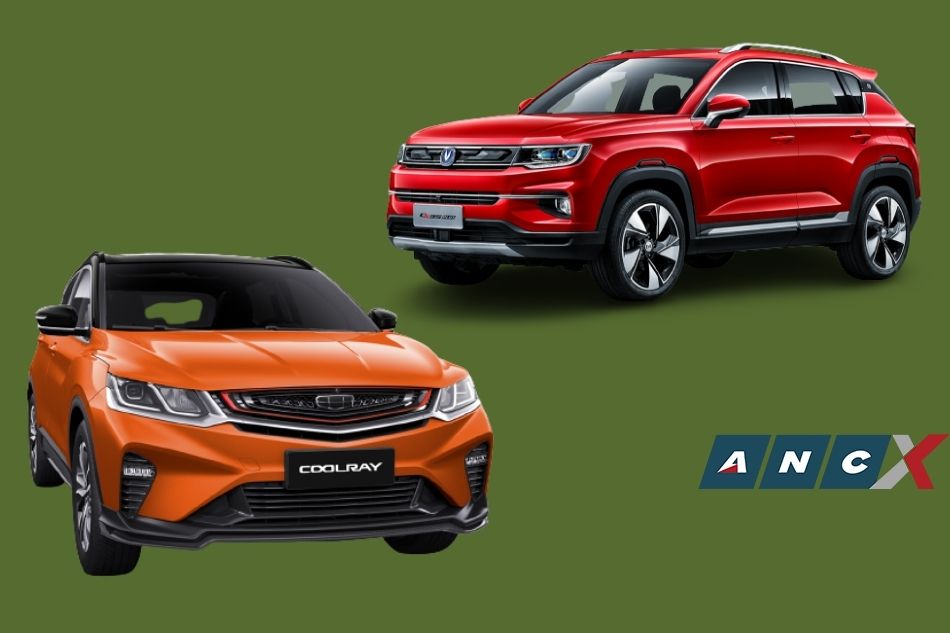Recent years have seen the immense growth in production and sales of China-made cars. Database company Statista reported that approximately 21 million passenger vehicles was produced in China in 2020 alone. That’s a staggering surge from 7 million in 2008. This puts China on top of the list of countries with the largest production of passenger cars (and by this we mean road motor vehicles that can seat up to nine pax including driver).
“On average, every fourth passenger vehicle produced in the world was produced in China,” notes the report. The list of countries which produces the most number of cars in the world includes Japan, Germany, the United States and South Korea—all makers of some of the world's well-known car brands.
Despite its high production and high sales, there remains a notion that China-made cars, like stereotypical China-made products, are substandard or easily break down. Which brings us to the question: Are Chinese cars actually worth buying?
We asked car enthusiast, racer, reviewer and Reph Motors founder Reph Bangsil to give us his take on the hot topic. He also provides a review of the models he’s road-tested to give you a better idea on what to look out for and when to turn the other way.
Cars then and now
Reph says it's totally normal for people to not easily trust a new market player. He thinks it’s just a matter of time for Chinese car brands to gain its footing in the industry. "Nung '60s and '70s na American cars pa lang ang sikat, at pumasok ang Japanese automakers sa industry, people also doubted the quality of Japanese cars. Look at [Japan] now—they’re one of the world’s top car makers."
The same goes can be said of Korean cars, which entered the industry in the '90s and 2000s. "Meron din silang mga kapalpakan noong una. But now Korean car brands are also well-established."
In the 2000s, when the Chinese car brands first came into the market, they largely failed to meet the market's expectation. As per The Wall Street Journal, Chinese cars back in the day got the reputation of being cheap and ugly.
Like other automobile brands, however, the Chinese ones had since evolved. "Now that they are back in the game with better quality cars, I think this is the perfect time for them to redeem themselves. Tingin ko ito na ang oras ng Chinese cars, because they are really well-built," observes Reph.
China-made cars may lack the sophisticated branding of their rivals but one might say this only makes them more affordable. “For the price of a normal Japanese sedan, you can already get a luxurious Chinese car,” says Reph.
Chinese cars are no longer far behind when it comes to modern technology—they already have 360 cameras, adaptive cruise control, huge infotainment systems etc. "Wala nang analog sa dashboard ng kotse nila. Puro screens na lang. Even their speedometer is fully digital," says Reph. To further prove their reliability, many Chinese cars have also extended their warranties.
Below are four Chinese cars that Reph has road-tested:
MG 5
Morris Garages is of British origin but it was bought by the Shanghai-based Chinese state-owned company SAIC Motor in 2007. The MG 5 is the longest and widest subcompact sedan in its class, with a spacious cabin and huge trunk space (512 liters of luggage room). One thing that stands out about this car is its full-on digital infotainment system, with Apple CarPlay and six audio speakers. Its huge screen displays a 360-degree vehicle view which makes parking a breeze.
“Drivability was great. I did not feel any delays in the suspension,” says Reph of the MG5. “May mga plastic components pa din yung car, since it’s a more affordable variant. But as a counterpart to the Vios, it’s actually a good one. In terms of styling, may pagka-European look—like a BMW married with a Volkswagen.
Changan CS35 Plus and CS75 Plus
This luxury SUV is one of the nicest Chinese vehicles he has ever driven, says Reph. It comes in dual color, red-and-black leather stitching with a full-on digital infotainment system and digital gauge cluster. “Acceleration was great. Napakaganda ng interior nya. Para kang nasa kotse ni Tony Stark, very modern. It also came with a panoramic moon roof. It’s a very beautiful car and affordable na din given the tech that it’s giving you.” Reph says he was also amazed with the interiors and dashboard of the CS75 Plus.
Chery Tiggo 2
This is a modern-looking but affordably priced crossover. Compared to its competitors, Reph says the the Cherry Tigo is a little behind, citing that it did not come with a digital gauge cluster. “Semi-digital lang siya,” he says. “It did come with an infotainment system pero hindi kasing-laki ng mga rivals niya.” He goes on: “For me, may pagka-jerky ang transmission, yung pag-shift nya. But it’s still a good car to go for, given that it’s really affordable,” he says. The brand gives a five-year full service warranty, and 10 years for the drivetrain system.
Geely Coolray
This is one of the top-selling subcompact crossovers in the country now, says Reph. It has a full-on digital gauge cluster, and comes with a modern infotainment system. It also has an automatic parking feature and a 360-panoramic camera view. “The acceleration is great. It’s a reliable car,” he says.







